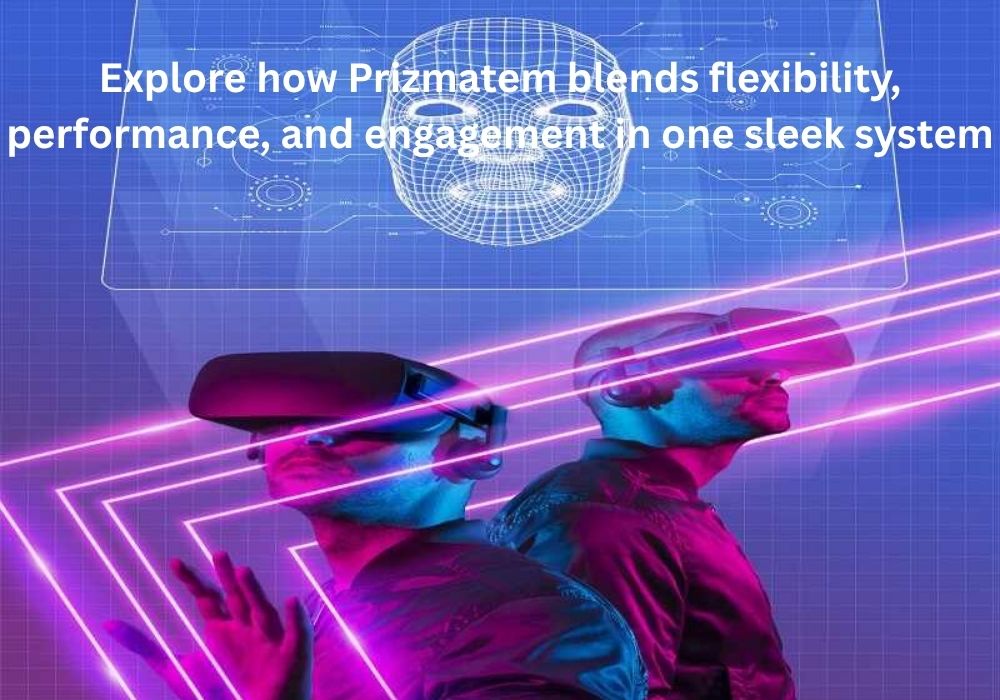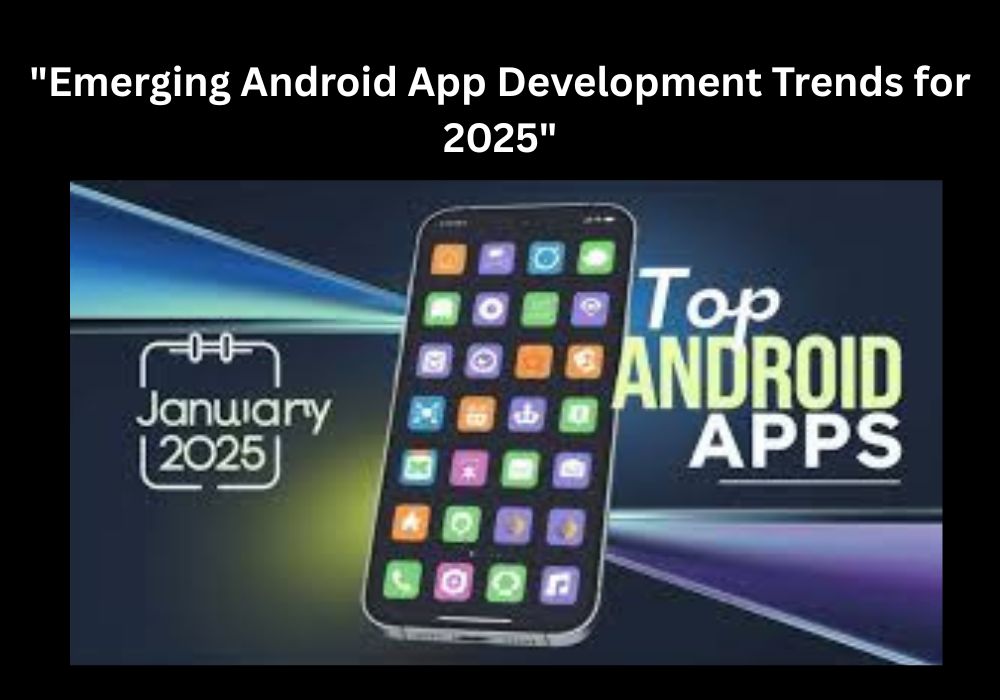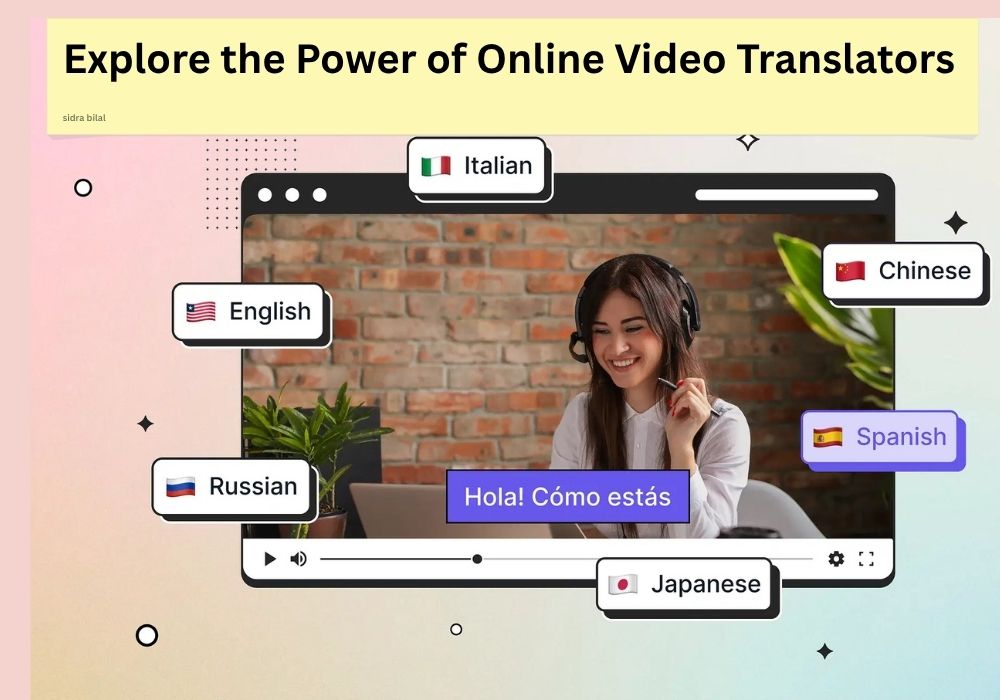Technology
Boost Organic Traffic With Garage2Global: Smart SEO That Scales

Technology
Prizmatem: The Modular Engine Driving Creative and Digital Innovation

In a world where creativity meets cutting-edge tech, Prizmatem emerges as a modular powerhouse. Whether you’re a digital artist, developer, educator, or innovator, this platform reimagines how content is created, managed, and experienced. Let’s explore how Prizmatem blends flexibility, performance, and engagement in one sleek system.
Though interpretations may differ, the core of Prizmatem lies in its vibrant, multi-layered essence—reminiscent of how a prism reveals hidden colors. It captures the modern approach to creating rich, multifaceted experiences by blending technology, emotion, and visual storytelling.
What Is Prizmatem — A Versatile Digital Framework
Prizmatem isn’t a single product—it’s a modular platform used across digital design, AI content creation, education, and even material science. It combines a prism-like approach that splits ideas into multiple applications, symbolizing creativity and systematization
The name itself blends “prism” and “system,” implying a layered, multi-faceted architecture. This metaphor highlights how you can channel one concept through many outputs—be it apps, visuals, simulations, or workflows
What makes Prizmatem stand out is its adaptability. Developers and creatives can customize, plug in modules, and evolve the platform to meet evolving digital needs across sectors.
Modular Architecture — Flexibility by Design
At its core, Prizmatem works through a microservice-like structure—each module performs a unique role but connects seamlessly via APIs. Kind of like building with LEGO, except each block can be AI-powered, data-scientific, or design-oriented
This means you can piece together a workflow where machine learning analyzes data, another module renders graphics, and a third publishes results—in one smooth process. Users only include what they need, maintaining efficiency.
Because the platform is modular, scaling up or swapping parts is easy. Want interactive visuals today and educational tools tomorrow? Simply plug in the right module and skip the bloat—enhancing both speed and creativity.
Creative & Technical Use Cases
Design & Rendering Tools
Prizmatem powers next-gen creative software—enabling immersive effects like light diffraction, layered visuals, and 3D modeling. Ideal for digital artists, architects, and animators looking to elevate their output
AI-Powered Content Generation
Certain tools branded under Prizmatem generate text, images, or even code—branching a single prompt into multiple outputs. This layered experimentation helps marketeers, writers, and DevOps teams iterate fast
Educational & Simulation Modules
In STEM, Prizmatem modules simulate optics, light behavior, and geometry concepts—perfect for classroom demonstrations and interactive physics lessons
Advanced Material Use — Beyond Digital
Prizmatem also refers to a real-world transparent composite material that merges micro-prisms with polymers—offering crystal clarity, resilience, and light manipulation for optics, architecture, and electronics
This material is lightweight, impact-resistant, and thermally stable—ideal for applications like AR headsets, greenhouse panels, and durable medical devices .
Its eco-conscious design is recyclable and energy-efficient, aligning with sustainable development goals in smart buildings and green electronics.
How Prizmatem Reflects Digital Identity
At its core, Prizmatem isn’t just a platform—it’s a lens for understanding digital identity in an increasingly complex online world. With countless profiles, usernames, and expressions spread across the internet, our sense of self can often feel fragmented. But Prizmatem embraces this diversity, turning what seems like digital chaos into a coherent, creative narrative.
Think of it this way:
-
Your identity is multidimensional, not confined to one form.
-
Expression online is layered, changing with context and platform.
-
Fluidity is strength—who you are digitally today might evolve tomorrow.
Like a prism turning white light into vibrant color, Prizmatem encourages you to explore and reveal every shade of your online self.
Visual and Interactive Signatures of Prizmatem Design
Projects inspired by Prizmatem often share visual patterns and interaction themes that reflect its philosophy. Here’s a look at some common creative elements reimagined:
| Design Feature | Creative Purpose |
|---|---|
| Light Fragmentation | Symbolizes ever-shifting perspectives, echoing the fractured-yet-unified digital self |
| Iridescent Effects | Introduces a dreamy, futuristic tone—constantly changing based on viewpoint |
| Structured Asymmetry | Balances order and unpredictability, mirroring personal complexity |
| Responsive Design Cues | Visuals react to motion, touch, or scroll, reinforcing the idea of identity in motion |
| Emotional Color Mapping | Colors shift based on user mood or theme—often glowing hues like violet, teal, and coral |
Key Features & Advantages
Prizmatem shines through its blend of modularity, efficiency, and versatility:
-
High Customization: Pick modules for AI, rendering, education, or data—don’t overload with what you don’t need
-
Creative Freedom: Combine tools to craft unique experiences—like AR-enhanced presentations or light-optimized visuals .
-
Performance & Scale: Lightweight modular builds perform better, scale faster, and cost less than bulky all-in-one software .
This approach streamlines workflows and fosters new forms of innovation across industries.
Challenges & What to Watch
Despite its promise, Prizmatem has hurdles to clear:
-
Documentation & Support: As a rising framework, it sometimes lacks polished docs or large user communities
-
Integration Complexity: Connecting older systems or legacy software may require extra developer effort .
-
Cost & Procurement: High-spec material and custom modules can have premium pricing, requiring strategic deployment .
Yet, these are natural growing pains—and many resources are emerging daily.
Why Prizmatem Matters Today
Prizmatem is gaining attention for good reason:
-
Distinctive Branding: The name is unique and memorable—a boon for startups and creative ventures Cross-Industry Reach: It spans from digital content creation to AR, education, and sustainable materials
-
Eco-Innovation: Its material modules support sustainable design and align with modern environmental goals.
This breadth assures Prizmatem’s relevance in the near and long-term future.
Summary
Prizmatem is more than a buzzword—it’s a forward-looking modular platform merging creative software, AI capabilities, educational tools, and sustainable material science. With adaptable modules, promising performance, and a unique identity, Prizmatem is positioned to reshape how we build and experience digital and physical worlds. Stay tuned—it’s modular innovation at its finest.
FAQs About Prizmatem
Q1: Is Prizmatem a single tool or a suite?
It’s not one app—it’s a modular framework spanning digital tools (AI, design, education) and material technologies (composite optics)
Q2: Do I need coding skills to use it?
Not necessarily. Many modules are plug-and-play, though deeper integrations for legacy systems or materials might require developer support .
Q3: Where is it used currently?
Modules are used in creative agencies, educational institutions, green architecture, and AR hardware development—still early adoption, but growing
Q4: Is it environmentally sustainable?
Yes—its composite material options are recyclable and made using low-energy production methods
Q5: How do I start with Prizmatem?
Begin with a module that fits your need—download, integrate, and explore community examples. Consider documenting your process to contribute to its growing ecosystem .
READ ALSO:
Android App Evolution: 4 Game-Changing Development Trends to Watch in 2025
Technology
Android App Evolution: 4 Game-Changing Development Trends to Watch in 2025

The Android ecosystem never sits still—and 2025 is shaping up to be a landmark year for innovation. From AI-powered personalization to immersive app experiences, developers are embracing powerful new tools and frameworks that are redefining how users interact with mobile apps. Whether you’re a developer, tech enthusiast, or entrepreneur, staying ahead of the curve is key.
In this article, we’ll explore the top 4 Android app development trends in 2025 that are poised to reshape the mobile experience. These trends aren’t just buzzwords—they’re real, impactful shifts that are already making waves in the Android development space.
1. AI-Powered Personalization Takes the Lead
Artificial Intelligence is no longer a luxury—it’s a necessity in Android development. In 2025, AI will play a central role in delivering personalized app experiences based on user preferences, behavior, and interaction history.
Developers are integrating AI to make apps smarter, faster, and more intuitive. Think content recommendations, adaptive UI layouts, and predictive search—tailored for every user. With tools like Google ML Kit and TensorFlow Lite, AI integration is becoming more accessible than ever.
Not only does this lead to better user engagement, but it also helps apps retain users by offering value-driven, individualized experiences. Personalization isn’t just a feature—it’s a key growth strategy.
2. Rise of Instant Apps and Modular Development
The demand for seamless, no-download experiences has skyrocketed, and Android Instant Apps are answering that call. In 2025, expect to see more apps developed in smaller, modular formats, allowing users to access only what they need without installing the full app.
This trend caters to users with limited device storage or those who want to try out functionality before committing. Instant Apps deliver a smoother onboarding experience, especially for eCommerce, gaming, and travel platforms.
For developers, modularization offers easier updates and maintenance. By breaking the app into modules, teams can build, test, and release updates independently—reducing time-to-market and improving scalability.
3. Multi-Platform Development with Kotlin Multiplatform
Kotlin Multiplatform is fast becoming the go-to tool for building apps that run seamlessly on Android, iOS, and beyond. In 2025, cross-platform compatibility will be a major focus for businesses aiming to maximize reach while minimizing development costs.
Kotlin Multiplatform allows developers to share business logic across platforms while writing platform-specific code only when necessary. This leads to better performance and a more native experience than traditional frameworks like React Native or Flutter.
With official backing from JetBrains and increasing support from the Android community, Kotlin Multiplatform is reshaping how apps are built—making it easier to maintain consistency, reduce duplication, and future-proof development workflows.
4. Immersive UX with AR, VR, and Spatial Computing
Immersive technologies are no longer futuristic—they’re current and growing fast. In 2025, Android app developers are embracing Augmented Reality (AR), Virtual Reality (VR), and spatial computing to offer next-level user experiences in gaming, education, retail, and more.
Google’s ARCore is at the forefront, enabling apps to integrate AR features like virtual try-ons, interactive navigation, and 3D visualization. These elements create a richer, more interactive experience that captures user attention and builds brand loyalty.
As hardware becomes more capable and affordable, expect immersive UX to become a standard, not an exception. Developers who invest in these technologies now are laying the foundation for next-gen applications that will dominate the market in the coming years.
FAQs About Android App Development Trends in 2025
Q1: Why is AI becoming essential in Android apps?
AI enhances personalization, improves efficiency, and enables smarter app functionality. It helps apps adapt to user behavior in real time.
Q2: What are Android Instant Apps?
They’re lightweight apps that run instantly without full installation. Great for demos, quick services, or storage-conscious users.
Q3: How does Kotlin Multiplatform help developers?
It allows code reuse across platforms, reducing development time and improving consistency between Android and iOS apps.
Q4: Is AR and VR development expensive?
While it can require specialized tools, platforms like ARCore and Unity make immersive development more accessible and scalable.
Q5: Which industries benefit most from these trends?
E-commerce, gaming, healthcare, education, and social media are already leveraging these trends for better engagement and ROI.
READ ALSO:
Face Swap Magic: How Face Swapping Video Apps Are Transforming Digital Content
Technology
Breaking Language Barriers Instantly: The Power of Online Video Translators

In today’s global digital landscape, content isn’t confined by borders—but language still remains one of the biggest barriers to accessibility. Whether you’re a content creator, educator, business owner, or brand storyteller, reaching a broader audience often means speaking their language—literally. That’s where online video translators come into play.
These intelligent tools are transforming how we connect, educate, market, and share stories across languages. In this article, we’ll explore how online video translation works, why it’s important, and how it can help break language barriers instantly and effectively.
What Is an Online Video Translator?
An online video translator is a digital tool that automatically translates spoken or written content in a video into another language. This could involve:
-
Subtitles and captions translation
-
Voice-over or dubbing translation
-
Real-time transcription and multilingual support
Modern tools leverage AI and machine learning to process speech, recognize context, and output accurate translations at lightning speed.
Popular platforms like YouTube, Kapwing, DeepL, VEED.io, and Google Translate for Video have made this technology widely accessible—even for non-tech-savvy users.
Why Video Translation Matters in 2025
With video being the most consumed form of online content, the ability to translate and localize videos is no longer a bonus—it’s a necessity.
1. Global Audience Reach
Video translation allows your message to reach viewers around the world, regardless of their native language. This is particularly useful for businesses expanding into new markets, or creators aiming to grow internationally.
2. Enhanced Accessibility
Adding subtitles or dubbing in multiple languages makes content inclusive for people with hearing impairments or non-native speakers.
3. Boosted SEO and Engagement
Multilingual subtitles help with SEO by making your content searchable in various languages. This leads to higher visibility, more views, and increased watch time.
4. Cost-Effective Localization
Hiring professional translators for every video can be expensive and time-consuming. Online video translators provide a faster, scalable, and more affordable solution.
How Online Video Translators Work
Here’s a simplified breakdown of the process:
-
Upload your video to the translator tool or platform.
-
The tool uses speech recognition to transcribe spoken words.
-
It then translates the transcript using AI-based natural language processing.
-
You can choose whether to overlay subtitles, create a dubbed version, or both.
-
The translated video can then be exported or embedded online.
Some tools even offer voice cloning to retain the original speaker’s tone in different languages—blurring the line between human and machine-generated content.
Top Use Cases for Online Video Translators
1. Content Creators & Influencers
Reach international audiences without re-recording content in multiple languages.
2. E-Learning & Education
Translate lectures, training videos, and webinars to make education more accessible worldwide.
3. Marketing & Branding
Globalize your campaigns by localizing promotional videos for different demographics.
4. Customer Support & Tutorials
Offer how-to videos in various languages to enhance user satisfaction and reduce support tickets.
5. Film & Media
Easily subtitle or dub documentaries, short films, and series for cross-border distribution.
Features to Look for in an Online Video Translator
-
Accuracy in speech recognition
-
Support for multiple languages
-
Subtitle customization
-
Real-time or fast processing
-
AI voice dubbing capabilities
-
Integration with platforms like YouTube, Vimeo, or social media
Tips to Get the Best Results
-
Start with clear audio — better sound quality improves transcription accuracy.
-
Use tools with AI-context learning to handle idioms or cultural phrases.
-
Review and edit translations manually if possible, especially for important content.
-
Customize subtitle timing to sync well with the video pace.
Conclusion:
In a world that thrives on video content, not translating your videos is like locking the door to global opportunities. Online video translators are breaking down linguistic walls, making it easier than ever to connect with audiences around the world in seconds. Whether you’re teaching, selling, or simply storytelling—language should never be the limit.
Start using an online video translator today and open your message to the world.
FAQs: Online Video Translators and Breaking Language Barriers
Q1: Are online video translators accurate?
Yes, especially those powered by advanced AI and machine learning. While not perfect, tools like DeepL, VEED.io, and Kapwing offer impressive accuracy that can be further refined with manual review.
Q2: Can I translate a video into multiple languages at once?
Many tools allow batch processing or provide multiple language export options, making it easy to create subtitles or dubbed audio in several languages simultaneously.
Q3: Is video translation helpful for SEO?
Absolutely. Multilingual captions and transcripts improve visibility in search results across different regions and languages, increasing traffic and engagement.
Q4: Are there free video translation tools?
Yes, platforms like YouTube’s auto-caption and translation tools are free. However, premium tools offer more customization, dubbing features, and better accuracy.
Q5: Can I use video translators for live streaming?
Some advanced platforms offer real-time translation for webinars, live events, and virtual conferences, but this feature may require a subscription or enterprise plan.
READ ALSO:
Face Swap Magic: How Face Swapping Video Apps Are Transforming Digital Content
-

 More7 months ago
More7 months agoThe Rise of Lillienu: Transforming Technology and Creativity
-

 Fashion7 months ago
Fashion7 months agoUnveiling the Secrets of Ceylan Eye Cream Reviews
-

 More7 months ago
More7 months agoThe Rise of Artofzio: Transforming Creativity in the Digital Era
-

 More7 months ago
More7 months agoSwindle Trilogy Website: A Must-Visit Hub for Book Lovers
-

 More7 months ago
More7 months agoInfluencersginewuld: Revolutionizing the Influencer Marketing Landscape
-

 More7 months ago
More7 months agoCeylan Eye Cream Reviews: Is It Worth the Hype?
-

 News6 months ago
News6 months agoThe Shocking Details of the Scott Levin 2011 Truck Accident
-

 Business7 months ago
Business7 months agoIvermectin: The Medication That Changed Global Health
